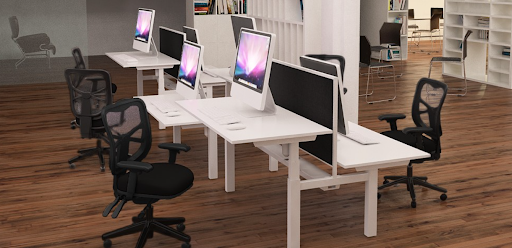
Office furniture segment improves as manufacturers embrace sustainability and consumer demand trend shifts towards ergonomically designed office furniture
Within the last few years and according to industry sources the total global production of office furniture reached is currently valued above US$ 52 billion and is growing on a positive tangent as far as industry observers are concerned.
An in-depth analysis by CSIL (Centre for Industrial Studies) indicated in a recent report that the office furniture segment represents an approximate 10% of the total global furniture output with Asia-Pacific being the primary player that holds a market share of 52% of the total office furniture production (which includes Australia) and followed by North America with an approximated 24% and Europe coming in at third place worth a 19% of the total global output share.
The remaining 5% is held by various other geographical areas with marginal shares. With the introduction of new legislation that revolves around sustainable office furniture production and demand preferences by consumers that lean towards ergonomic office chairs and tables, the industry has been seen to be 'reinventing' itself as it improves along the entire value chain by using recycled materials that is supported not only by office furniture manufacturers, but also suppliers, retailers and consumers.
This evolution towards circularity that is currently taking place is successful in countries such as Australia and New Zealand due to the participation of the entire value chain including furniture designers, assemblers, wholesalers, architects, interior designers, retailers and even consumers to a certain degree.
From a marketing perspective, product design has always played a significant role and the latest furniture designs feature easy assembly and disassembly and this makes it easy for consumers to substitute specific parts. Manufacturers are also able to reduce cost and lower prices as they lean more and more towards recycled raw materials which is a natural 'win-win' scenario for everybody.
Even large MNCs such as Ikea which is world's biggest furniture retailer is aiming at only using renewable and recycled materials by the year 2030 which is not very far off. Torbjorn, the CEO of Ikea stated recently that the sheer size of the manufacturer gives the retailer the opportunity to "inspire and enable more than one billion people to live better lives, keeping in mind the limits of the planet."
The industry is currently undergoing a revolution that is centred on not just design focused on aesthetics, but also the health of both office employees and the planet. Most ergonomic chairs for example produced by responsible manufacturers use components that are made from recycled plastics for the frame fittings which are also cost effective.
These are solutions that will go a long way in not only sustaining the industry, but actually improve the entire value chain from every angle as manufacturers slowly phase out non-recycled plastic.
Manufacturers are now engaging a diversified range of raw material suppliers that will eventually create a healthy cycle that is expected to establish a self-sustaining business network that will last.








